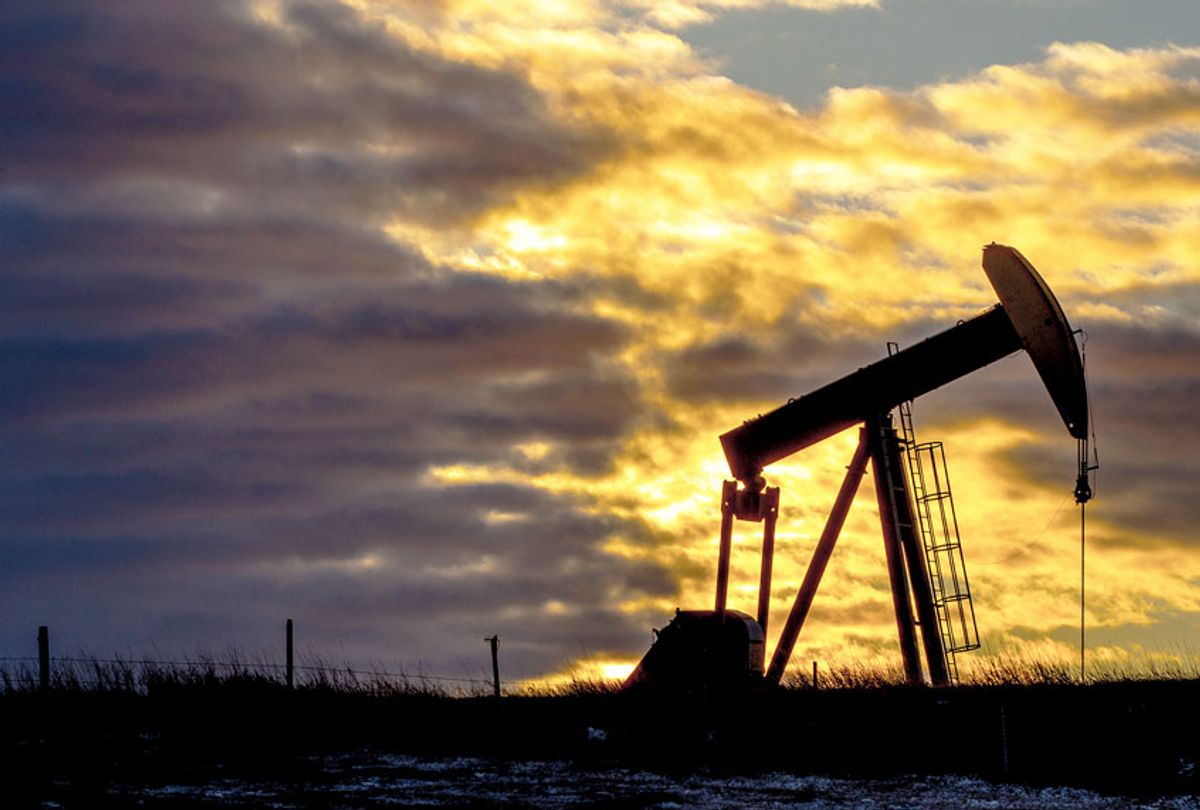In 2019, oil and gas companies operating on tribal and federal lands lost $63 million in revenue from venting, flaring, and leaking infrastructure. That loss, according to a report from the Environmental Defense Fund and Taxpayers for Common Sense, shows that Indigenous nations lost the most potential royalty revenue: approximately $21.8 million. Researchers say that total loss across all lands represents enough natural gas to power 2.2 million households for a year — almost every home in New Mexico, North Dakota, Utah, and Wyoming combined. However, those numbers are likely much higher: researchers did not include emissions from Alaska, Michigan, Nebraska, Illinois, or Indiana.
Gas is wasted when it is released directly into the atmosphere through venting, or burned at the site of extraction by flaring, or when it leaks from aging or ill-fitting infrastructure. As a potent greenhouse gas with warming power 80-times that of carbon dioxide, methane is often released with additional air pollutants. Those emissions contribute heavily to climate change and poor healthcare outcomes for local communities.
Synapse Energy Economics, the consulting firm that conducted the analysis, found that 54 percent of the gas lost in 2019 was due to flaring, 46 percent to leaks, and less than 1 percent to venting. Researchers found that on federal lands, a majority of natural gas is lost to leaks while on tribal land, most loss is attributed to flaring. Overall, roughly $275 million worth of gas is lost through flaring.
Wasted methane shortchanges the royalties that tribal, state and federal governments collect for oil and gas production that often fund priorities like education, infrastructure and public services. According to the report, while tribal governments lost the most potential revenue, states lost $20.5 million and the federal government lost $21.3 million. Additional research showed that flaring rates on Mandan, Hidatsa, and Arikara Nation lands atop the oil-rich Bakken formation were extremely high compared to public and tribal lands outside of North Dakota. Lost royalties from the MHA Nation totaled an estimated $19 million.
"We can't continue to allow half a billion dollars' worth of taxpayer-owned resources to go to waste every year," Jon Goldstein, a senior director at the Environmental Defense Fund, said in a press release. "The Biden administration has a clear opportunity to step up with strong rules that stop waste and pollution from practices like routine flaring to protect the public interest. These resources should benefit priorities like education and infrastructure, not be released into the atmosphere to undermine our climate and health."
The report comes in the wake of two proposed rulings from the EPA and the Bureau of Land Management aimed at reducing methane waste. Both proposals were issued last November and the EPA is accepting public comment on their proposal until February 13.
Goldstein said that the two proposed rulings target methane emissions from different lenses. The EPA ruling operates with a "pollution-oriented focus," while the BLM ruling, which would target only federal and tribal lands, has a "waste-oriented focus." Together, the two strategies offer complementary solutions to reduce emissions, but Goldstein says that a crucial, missing provision is to limit how much gas can be flared in the first place.
"There should be guardrails that narrowly define conditions flares are allowed in," Goldstein said. "[Otherwise], it just becomes the cost of doing business. Oil and gas companies just write a check and continue to flare and waste."




Shares